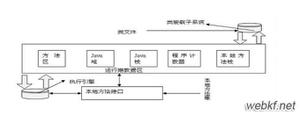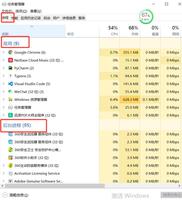深入理解Python中的闭包与装饰器

函数的装饰器可以以某种方式增强函数的功能,如在 Flask 中可使用 @app.route('/') 为视图函数添加路由,是一种十分强大的功能。在表现形式上,函数装饰器为一种嵌套函数,这其中会涉及到闭包的概念。而在嵌套函数之间,外部函数中的变量相对于内部函数而言为自由变量,使用时可能需要借助于 nonlocal 关键字进行声明。
nonlocal 声明
按变量的作用域进行分类,Python 中的变量可分为「全局变量」、「局部变量」以及「自由变量」。一般而言,Python 中使用变量前不需要声明变量,但假定在函数体中赋值的变量为局部变量~除非显示使用 global 将在函数中赋值的变量声明为全局变量!
而自由变量则是存在于嵌套函数中的一个概念~定义在其他函数内部的函数被称之为嵌套函数 nested function ,嵌套函数可以访问封闭范围内(外部函数)的变量。嵌套函数不可以在函数外直接访问。
在 Python 中,非本地变量默认仅可读取,在修改时必须显式指出其为非本地变量~自由变量 nonlocal,全局变量 global。
>>> ga = 1>>> def func():
... nb = 2
... def inner():
... ga += 1
... nb += 2
... print('ga is %s, and nb is %s' % (ga, nb))
... return inner
...
>>> test = func()
Traceback (most recent call last):
...
UnboundLocalError: local variable 'ga' referenced before assignment
未加入全局变量和自由变量声明时且使用赋值操作时,inner 函数的变量 ga, nb 默认为局部变量,会报错;如注释掉 ga += 1 后同样会报错:
Traceback (most recent call last):...
UnboundLocalError: local variable 'nb' referenced before assignment
可行改写如下:
>>> ga = 1>>> def func():
... nb = 2
... def inner():
... global ga
... nonlocal nb
... ga += 1
... nb += 2
... print('ga is %s, and nb is %s' % (ga, nb))
... return inner
...
>>> test = func()
>>> test()
ga is 2, and nb is 4
>>> test()
ga is 3, and nb is 6
通过显示声明 ga, nb 分别为「全局变量」和「自由变量」,此时如预期运行!
闭包
函数内的函数以及其自由变量形成闭包。也即闭包是一种保留定义函数时存在的自由变量的绑定的函数~这样在调用函数时,绑定的自由变量依旧可用。
闭包可以避免全局变量的使用以及提供某种形式的数据隐藏。当函数中的变量和函数较少且其中某个功能常用时,使用闭包来进行封装。当变量和函数更加复杂时,则使用类来实现。
# 计算移动平均值的函数def make_averager():
series = []
def averager(new_value):
series.append(new_value)
total = sum(series)
return total/len(series)
return averager
那么此时,make_averager() 函数的第二行 series = [] 到第七行 return total/len(series) 为闭包,变量 series 为 averager() 函数中的自由变量!
# avg 为一个 averager 函数对象 ~ 含自由变量的绑定>>> avg = make_averager()
>>> avg(10)
10.0
>>> avg(11)
10.5
>>> avg(12)
11
# 创建另一个 averager 函数对象
>>> avg2 = make_averager()
>>> avg2(1)
1.0
>>> avg2(18)
9.5
# 查看 avg, avg2 自由变量中保存的值
>>> avg.__closure__[0].cell_contents
[10, 11, 12]
>>> avg2.__closure__[0].cell_contents
[1, 18]
函数对象通过 __closure__ 属性 —— 返回 cell 对象元祖(函数中有多少嵌套函数则该元祖的长度有多长),生成该对象的函数被称之为闭包函数。
func.__closure__[0].cell_contents: 访问存储在 cell 对象中值。
装饰器
装饰器本身是一个可调用的对象~函数或类,其参数为另一个函数(被装饰的函数)。装饰器可能会处理被装饰的函数(如添加一些功能)然后将之返回,或者将之替换为另一个函数或可调用对象。这也被称之为元编程 metaprogramming —— 在编译时改变函数功能。
>>> def make_pretty(func):... def inner():
... print("I got decorated!", end=' ')
... func()
... return inner
...
>>> def ordinary():
... print("I am ordinary!")
# 用 make_pretty 函数装饰 ordinary 函数
>>> pretty = make_pretty(ordinary)
>>> pretty()
I got decorated! I am ordinary!
可以作为装饰器的函数内部都有嵌套的功能函数(用以实现主要功能),并返回内部的嵌套函数。
@make_prettydef ordinary():
print("I am ordinary!")
# 等价于
def ordinary():
print("I am ordinary!")
ordianry = make_pretty(ordinary)
make_pretty(func) 是一个最简单的装饰器,它接受一个函数为其参数;内部定义了一个 inner() 函数~输出 "I got decorated!" 后执行被装饰函数(此时 func 为 inner 闭包中的自由变量);然后返回内部函数 inner。
此时,对于被装饰的函数 ordinary 而言,此时是 inner 的引用:
>>> ordinary()I got decorated! I am ordinary!
>>> ordinary
<function make_pretty.<locals>.inner at 0x10aeaa1e0>
除了最简单的装饰器之外,还可以将多个装饰器叠放使用
叠放装饰器
def star(func):def inner(*args, **kwargs):
print('*' * 30)
func(*args, **kwargs)
print('*' * 30)
return inner
def dollar(func):
def inner(*args, **kwargs):
print('$' * 30)
func(*args, **kwargs)
print('$' * 30)
return inner
@star
@doller
def printer(msg):
print(msg)
printer("Hello world!")
# 结果如下
'''
******************************
$$$$$$$$$$$$$$$$$$$$$$$$$$$$$$
Hello world!
$$$$$$$$$$$$$$$$$$$$$$$$$$$$$$
******************************
'''
# 等价于
def printer(msg):
print(msg)
printer = star(dollar(printer))
以上是 深入理解Python中的闭包与装饰器 的全部内容, 来源链接: utcz.com/z/523677.html






